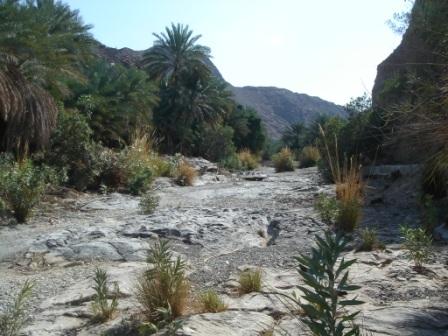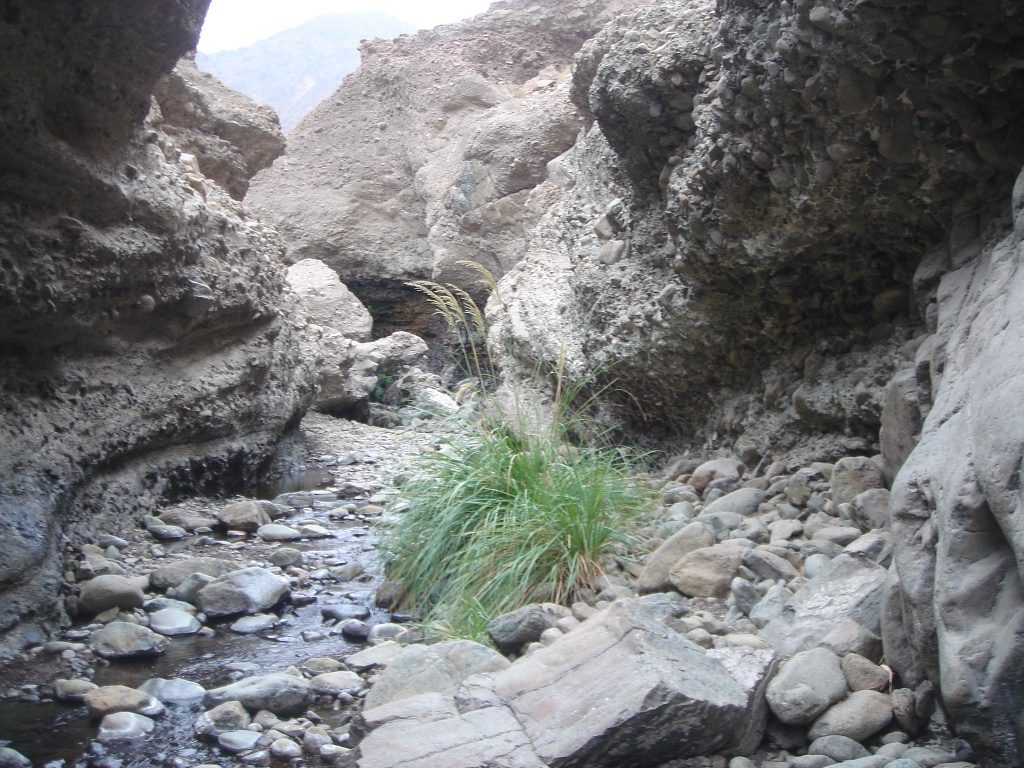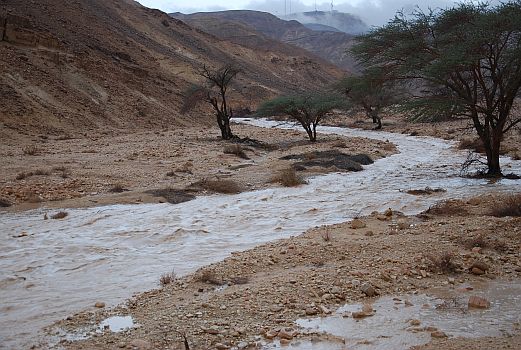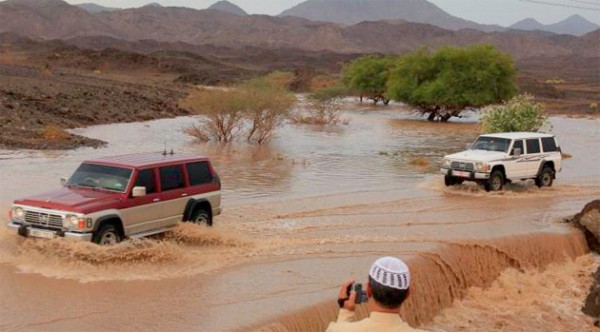Quick Overview
– Don’t hike in narrow canyons if there is a chance of rain
– If caught by rain : stay in a wide open place of the wadi
– Rocks are washed and dislodged with rain: stay away from cliffs
– Don’t cross deep wadis with your car: it will be swept away
– Google Youtube Flash flood if not convinced.
With the mountain comes the wadi: a depression in the landscape. That depression has been formed throughout the millions of years of water erosion and rock formation.
Because of the lower level, a wadi is mostly associated with water.
Indeed, after rainfall, the water will be collected in this lower part of the mountainous terrain and will run with sometimes tremendous strength. Loose rocks and gravel will be moved along with the strong current and gradually new riverbeds will be created.
With the recent construction of tar roads, bridges, fortified walls and dams, most of the wadis are now being kept under control and will not tend to change their course considerably.
The relatively easy and flat river bed logically resulted in the fact that – in olden times – the wadi was suitable for travelers who wanted to traverse the otherwise inaccessible mountains. At the same time it was the route along which goods were being transported, mainly by donkeys.
Worth Knowing
Most of the wadis will collect and carry water only after considerable rainfall in the winter months, only a few wadis have water throughout the whole year.
Some wadis are tributaries to other, larger wadis; they may end up in the sea; others in the desert plain. Wadi’s can be very wide; others may have the shape of a narrow gorge, a gully with high “walls”. Because of the presence of precious water in the arid environment, many oases, villages, plantations, farms, settlements can be found in the vicinity. Because of the erosion, wadis are of special interest to geologists. E.g. ophiolites (see previous page) and traces of glaciers can be observed; also at some places, the strata (layers) are very visible and give an interesting look at the millions of years of earthly movement.
Flash Floods
Drowning in a desert country might seem absurd but it isn’t.
Residents will confirm that a year without any rain is not exceptional, but will also have lots of stories about floods.
A wadi system can be fed by a mountain area of 100 sq kilometers. And that is not even a big wadi.
When heavy rain occurs you can have 10 ml of rain in a few minutes or a few million cubic meter of water which must rush through a small gorge. Very little water is absorbed by the rocks or stopped by vegetation.
Such floods are able to dislodge massive rocks and will move car sized boulders. They erode and carve deep canyons through hard basalt rock layers in the Hajar.
Needless to say that you will be swept away if caught by such torrents in a canyon or small wadi. Snake Canyon in Oman and Wadi Wurraya in the Fujairah emirate are good examples of such a canyon.
Don’t take risks. Postpone your hike if there is a chance of rain or visit another area with wide canyons instead of small gorges.
We have been in the mountains during the rain and it’s fantastic. The air gets cleaned out, no more dust, you see everything sharply instead of blurred by layers of suspended sand particles. A great experience as long as you don’t get trapped.
In a narrow gorge like this, a powerful flash flood will almost certainly turn out to be brutal and disastrous. Be prepared and don`t take the slightest risk…
![]()





